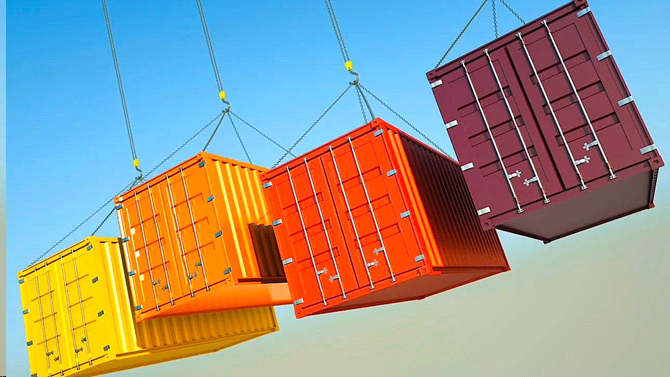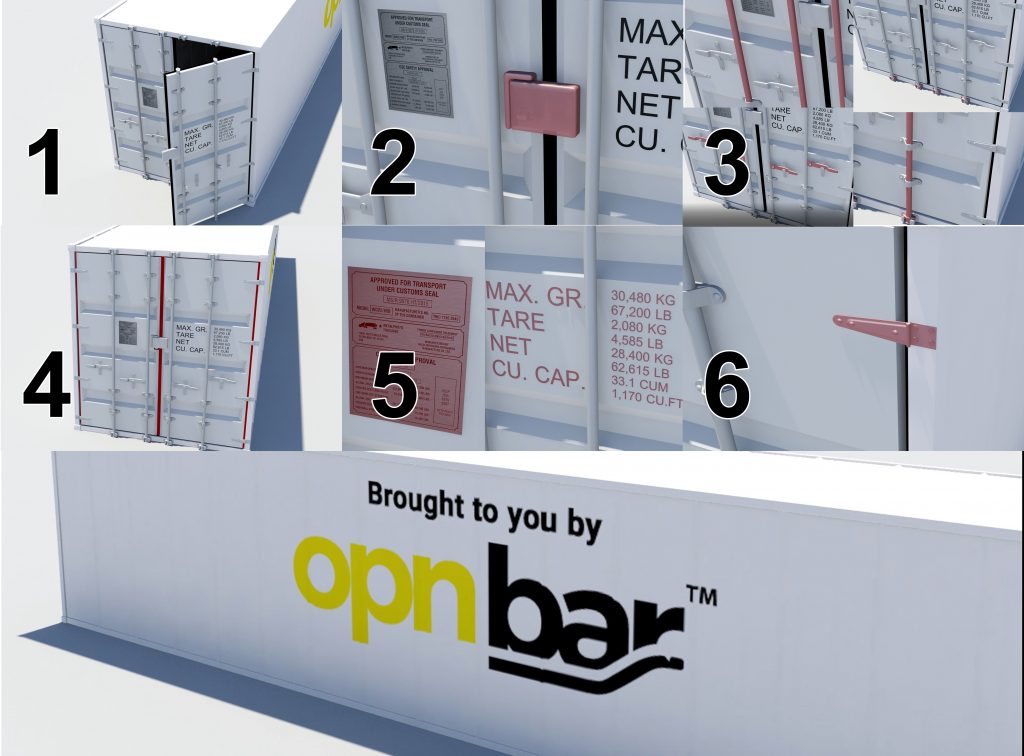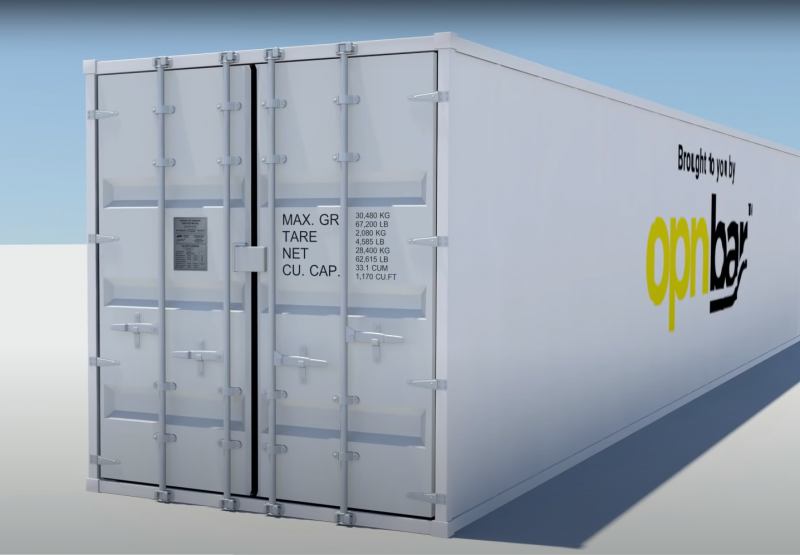Guide to Buying Used Shipping Containers for Sale
In the realm of innovative construction, sustainable housing, and creative entrepreneurship, used shipping containers have emerged as versatile treasures waiting to be discovered. Buying used shipping containers for sale isn't just a transaction; it's an entry into a world of endless possibilities. Let's explore the ins and outs of purchasing these rugged giants and unlocking their full potential.

The Appeal of Used Shipping Containers
Used shipping containers have gained immense popularity for several compelling reasons:
1. Cost-Effective Sustainability
Choosing a used container over a new one not only reduces your environmental footprint but also offers significant cost savings. By giving these containers a second life, you contribute to sustainable practices while keeping construction budgets in check.
2. Durability
Shipping containers are built to withstand the harshest of conditions at sea, making them incredibly durable. When properly maintained, a used container can provide decades of reliable service, ensuring that your investment stands the test of time.
3. Modular Versatility
Used shipping containers are like giant LEGO blocks for construction. Their standardized sizes and compatibility allow for endless design possibilities, making them ideal for creative and adaptable projects.
Tips for Buying Used Shipping Containers
1. Assess Your Needs
Before diving into the market, clearly define your project's requirements. Consider factors such as size, condition, and intended use. This initial assessment will guide your purchasing decisions.
2. Choose the Right Size
Shipping containers come in various sizes, with 20-foot and 40-foot containers being the most common. Select the size that best fits your project to minimize modifications and costs.
3. Inspect Thoroughly
Inspect the container in person if possible or request detailed photos. Pay attention to rust, dents, and structural integrity. A minor surface rust can often be remedied, but significant structural damage may not be worth the investment.
4. Understand Grades
Used containers are typically categorized into different grades based on their condition. Grade A containers are in the best condition, while Grade C containers may have more wear and tear. Choose the grade that aligns with your project's requirements and budget.
5. Check for Modifications
Some used containers may already have modifications, such as doors, windows, or insulation. Assess whether these modifications align with your project's needs or if they need to be removed or modified further.
6. Transportation and Placement
Consider how you'll transport the container to your project site and how you'll place it. Ensure you have the necessary equipment or arrangements in place for delivery and installation.
Innovative Uses for Used Shipping Containers
Once you've acquired your used shipping container, the real fun begins. Here are some creative ideas to spark your imagination:
1. Container Homes
Transform a used container into a cozy, eco-friendly home. With proper insulation and design, you can create a stylish and sustainable living space.
2. Pop-Up Shops
Start a retail business or cafe in a converted container. Their mobility allows you to take your business wherever your customers are.
3. Workshops and Studios
Set up an art studio, workshop, or creative space. The industrial feel of a container can inspire unique artistic endeavors.
4. Garden Sheds and Greenhouses
Use containers for garden storage or as a base for a greenhouse. Their durability protects your gardening tools and plants from the elements.
5. Mobile Offices
Create a comfortable and efficient workspace by converting a container into a mobile office. Perfect for remote or on-site work.
6. Emergency Shelters
In times of need, used containers can be repurposed into emergency shelters, providing temporary housing during disasters or humanitarian crises.
Buying used shipping containers for sale opens doors to innovation, sustainability, and affordability. These versatile steel giants have the potential to revolutionize your projects, whether you're building a home, starting a business, or unleashing your creativity. So, set sail on the seas of opportunity, and let the journey begin with a used shipping container as your vessel of transformation.
The Pros and Cons of Buying a Used Shipping Container
Shipping containers have transcended their original purpose as mere vessels for transporting goods across oceans and have found new life as versatile building blocks in various industries. Whether you're considering repurposing one as a tiny home, a mobile office, or an eco-friendly storage solution, buying a used shipping container can be an intriguing option. In this article, we'll explore the pros and cons of purchasing a used shipping container to help you make an informed decision.
Pros: Cost-Effective:
One of the most significant advantages of buying a used shipping container is cost savings. Used containers are considerably more affordable than brand-new ones, making them an excellent choice for individuals and businesses on a budget.
Pros: Eco-Friendly:
Repurposing a used container is an environmentally responsible choice. By giving new life to a container that might otherwise end up in a landfill, you contribute to recycling and reducing your carbon footprint.
Pros: Durability:
Shipping containers are designed to withstand harsh conditions at sea, making them incredibly sturdy and durable. Even used containers typically have many years of structural integrity left, ensuring your investment lasts for a long time.
Pros: Customization:
Used containers offer a blank canvas for customization. You can modify them to suit various purposes, such as adding windows, doors, insulation, and even plumbing and electrical systems. The flexibility for customization is limited only by your imagination and budget.
Pros: Mobility:
Shipping containers are inherently mobile. If you need to move your container-based structure, it can easily be transported using a truck or a crane, making them ideal for temporary or relocatable projects.

Cons: Wear and Tear:
The most apparent drawback of buying a used shipping container is the wear and tear it may have sustained during its life at sea. Scratches, dents, rust, and even structural damage can be present, depending on its history and previous use.
Cons: Maintenance:
Used containers may require maintenance and repairs to address issues like rust, leaks, or damaged flooring. While these can often be fixed, they can add to the overall cost and effort involved in the project.
Cons: Limited Sizes:
Finding the exact size and configuration you need in a used container can be challenging. Shipping containers come in standard sizes, so you may need to compromise on dimensions, leading to design constraints for your project.
Cons: Regulatory Hurdles:
Depending on your location and intended use, you might face regulatory hurdles when repurposing a shipping container. Local building codes and zoning regulations may impose restrictions on container-based structures, which can complicate your project.
Cons: Unknown History:
When you buy a used container, you might not know its complete history. It could have been used to transport potentially hazardous materials, which might require thorough cleaning and inspections before use.
Wear and TearWear and Tear
Shipping containers often take a beating, traveling around the world, being exposed to freezing conditions, and rust due to seawater or when the frost has melted.
During the cold season, and in freezing parts of the world, our shipping container tool can benefit the opening of frozen shipping container doors in freezing conditions and hard to open or rusted containers once the winter has ended.
Injuries often occur as a result of personnel trying to open and close difficult container doors, often the result of inappropriate techniques being used to open them.
Shipping container doors are not typical doors and there are 4-5 hinges per door. The hinge pins must be lined up correctly for the doors to be free to fully open and close.
Here are some likely reasons a Shipping Container door will not open or close. Our hand leverage tool / shipping container door extension handle helps to address these issues.
- Rust and Corrosion: The hinge pins and blade are seized due to corrosion. As shipping containers navigate through diverse weather conditions and environments over time, they become susceptible to rust and corrosion. These corrosive agents can target the locking mechanisms and hinges, ultimately impeding the smooth operation of the container's doors. This accumulation of rust and corrosion introduces a layer of complexity to unlocking and opening the container.
- Maintenance Neglect: Regular maintenance is pivotal to sustaining the functionality of shipping containers. The absence of consistent upkeep can lead to complications with the locking mechanisms, hinges, and seals. Without proper lubrication and care, these components might stiffen or become challenging to manipulate, thereby escalating the difficulty of opening the container.
- Physical Impact: The nature of shipping exposes containers to a barrage of wear and tear, stemming from transportation and handling activities. Consequently, the containers might acquire dents, twists, or misalignments. These physical distortions can hinder the proper alignment of the doors, rendering the opening process arduous.
- Uneven Placement: Placing a shipping container on uneven ground can disrupt its frame's equilibrium. This misalignment can extend to the doors, making them difficult to open or close. The uneven stance of the container introduces an extra layer of complexity when trying to access its interior. Doors and lock rods may warp or the container frame is racked so that the door gear will not operate correctly. This may be caused by cargo shifting during transit. Look at the container to make sure that the doors are aligned and level, both top, and bottom.
- Temperature Influences: Drastic temperature variations encountered during transportation can trigger material expansion and contraction. This phenomenon reverberates through the locking mechanisms and hinges, potentially impairing their normal operation. The impact of temperature fluctuations compounds the challenges associated with opening the container. Water has become trapped between frozen shipping container doors, particularly relevant to refrigerated cargoes, or containers with moisture-releasing cargoes in cold weather.
- Inadequate Tools: The task of opening a shipping container may necessitate specialized tools such as heavy-duty bolt cutters or unique locking mechanism tools. In the absence of these tools, the process can become considerably more demanding.
- Sealing Complexity: Some shipping containers employ adhesive materials or seals to ensure the contents remain shielded from environmental elements. Over time, these seals can harden and resist breaking. Consequently, accessing the container requires overcoming this intricate sealing mechanism.
- The door gasket has been damaged and is preventing opening. Door gaskets are designed to present two or more fins against the structure or adjacent door. These are generally flexible but when the gasket is damaged, they may become hard or blocked thus jamming the door closed, or preventing it from being closed.
- Security Enhancements: Certain shipping containers incorporate robust security features to discourage unauthorized access and potential theft. Although these features are indispensable for safeguarding the contents, they can inadvertently increase the intricacy of opening the container.
- The Covid economy had also released many shipping containers in the world which are now often reused and the issue of hard-to-open/close used shipping containers is now a more common issue than ever.

Final Thoughts
Buying a used shipping container presents both advantages and challenges. If you're willing to put in the effort to refurbish and customize, a used container can be a cost-effective, eco-friendly, and highly durable building solution. However, you should carefully consider the potential wear and tear, maintenance requirements, and regulatory hurdles associated with your project. Ultimately, your decision should align with your specific needs and budget, but with creativity and careful planning, a used shipping container can offer a unique and sustainable solution for various purposes.
Shipping containers, once solely associated with maritime transportation, have evolved into versatile structures that have found applications far beyond their original purpose. The availability of shipping containers for sale has opened up a world of possibilities, offering cost-effective and customizable solutions for a wide range of needs. Here, we explore the unique features and potential applications of shipping containers, highlighting their benefits in various industries.
Address:
10053 Whittwood Dr,
Suite 11284 Whittier,
CA 90603 USA | 657.6.OPNBAR (657-667-6227)
Website : https://www.shippingcontainertool.com/what-is-a-shipping-container/
Video: https://www.youtube.com/watch?v=N3pUEuZRg9c&feature=emb_title

Comments
Post a Comment